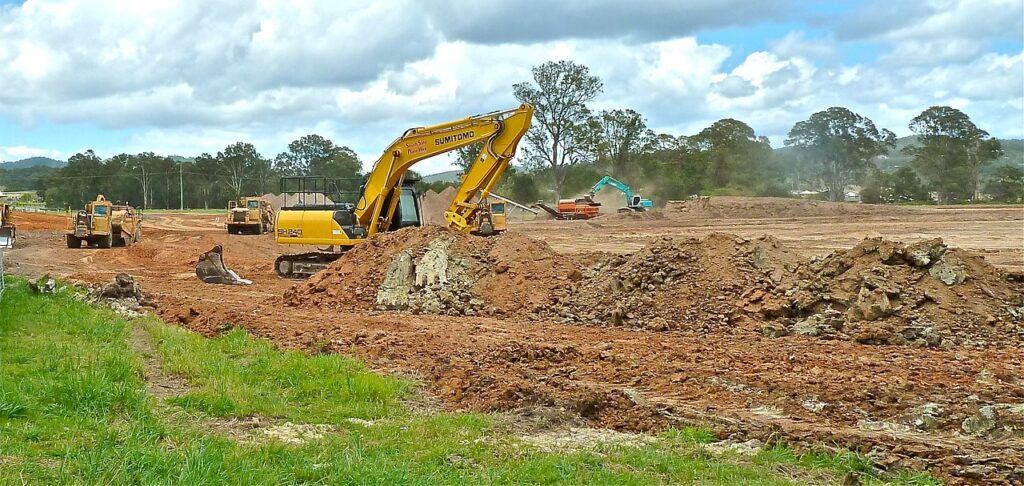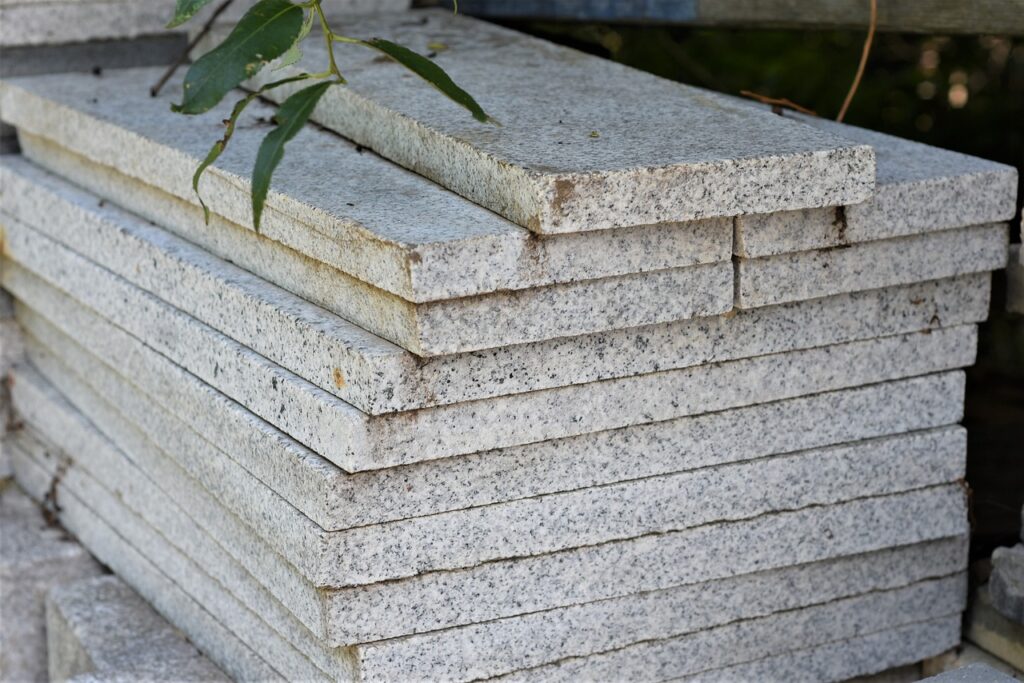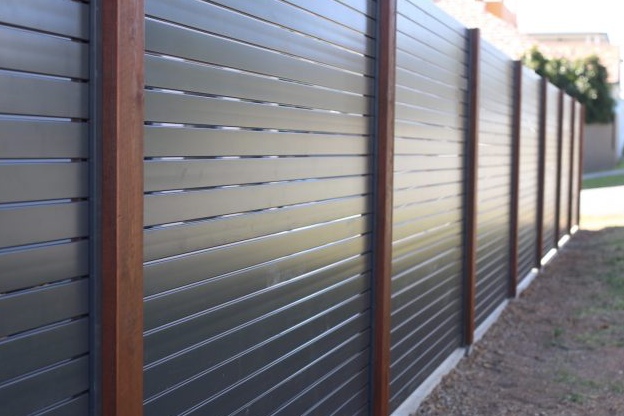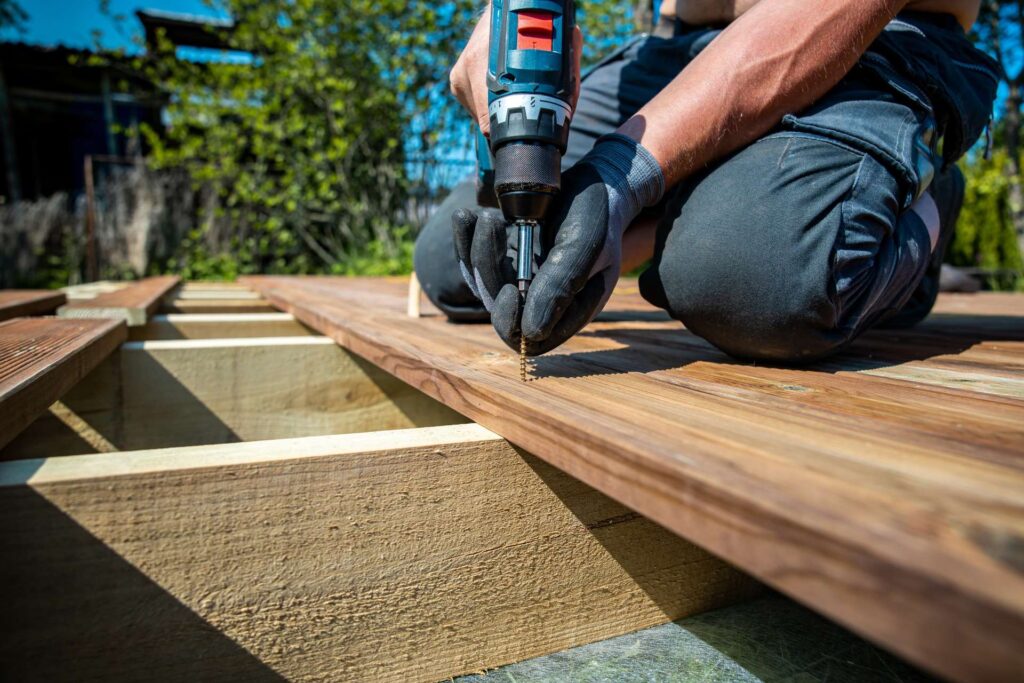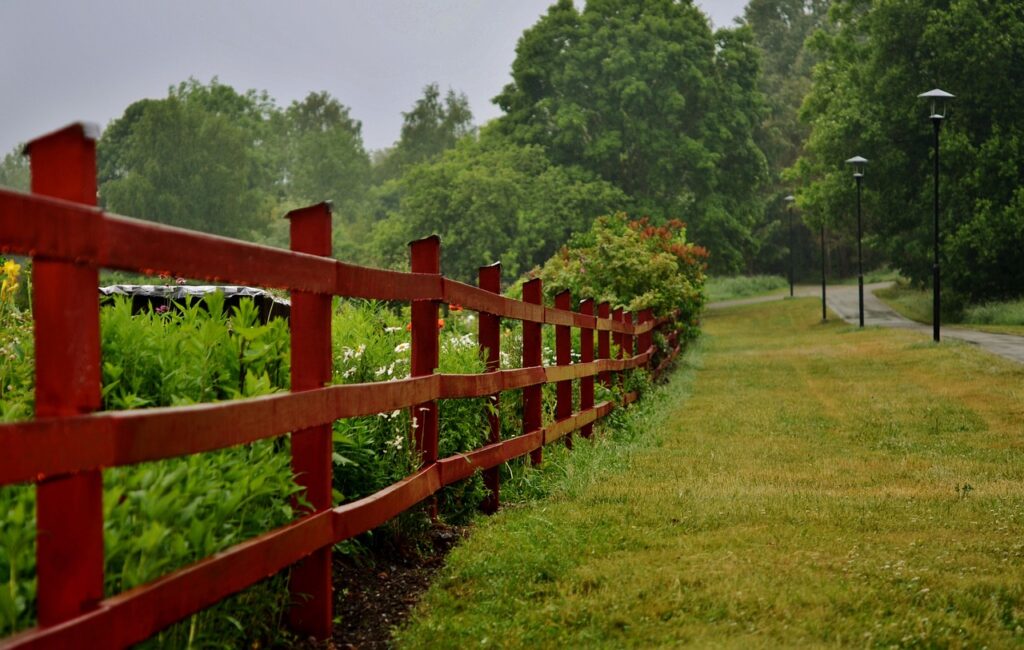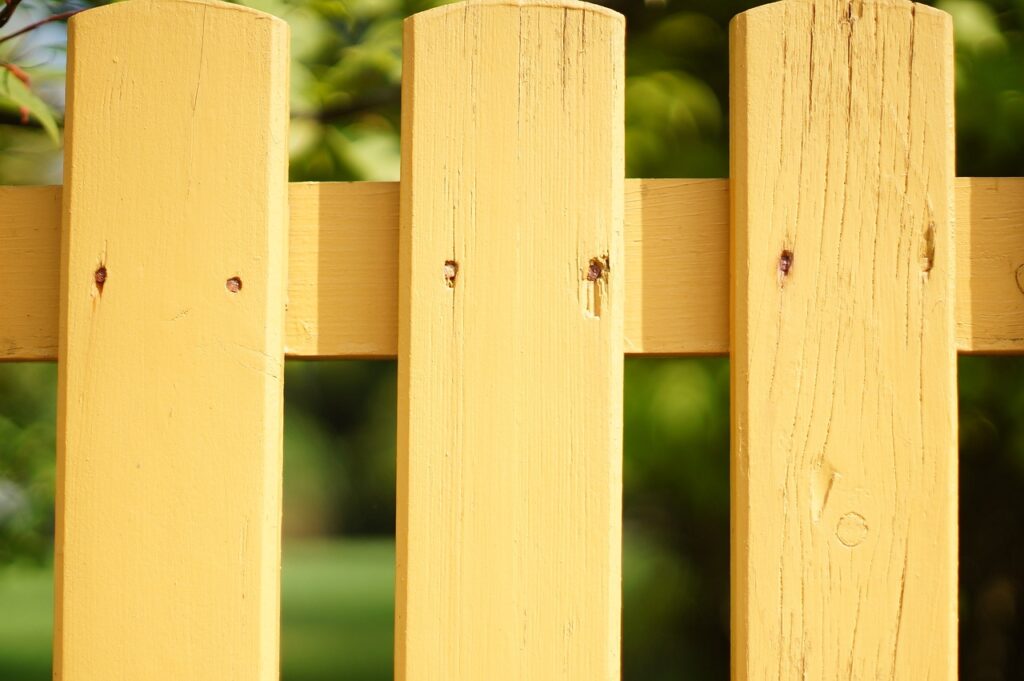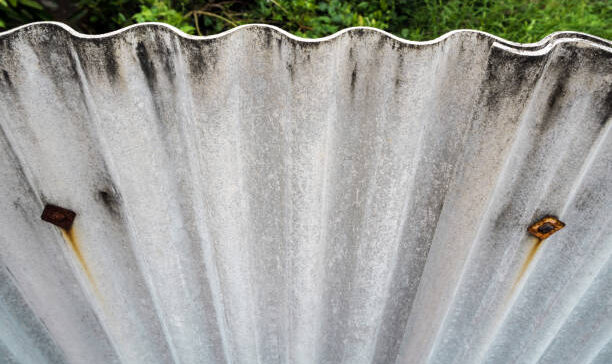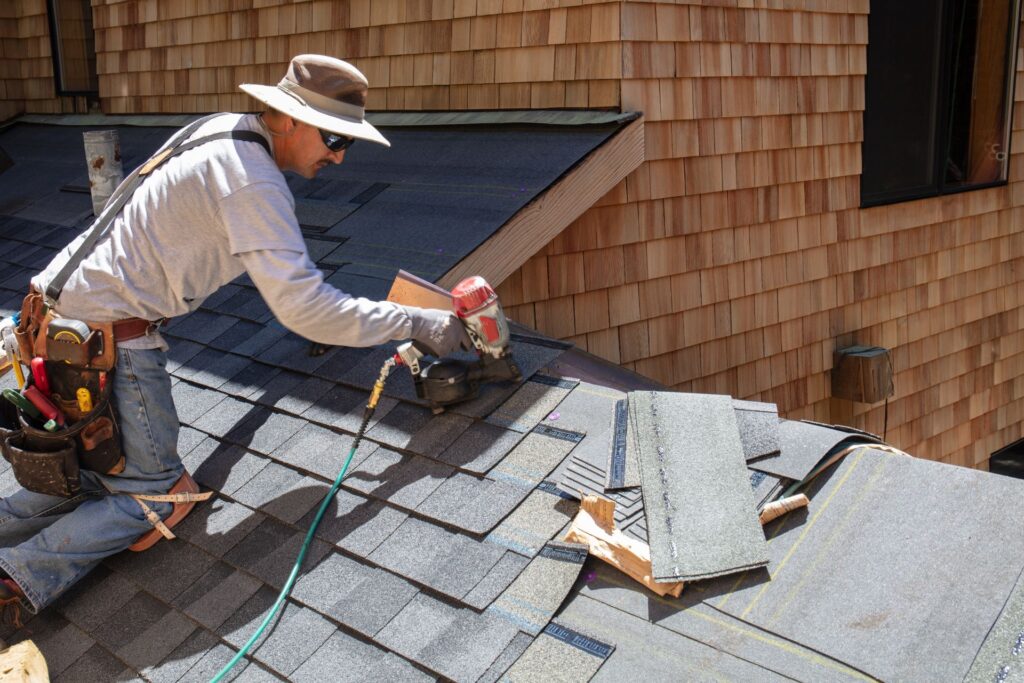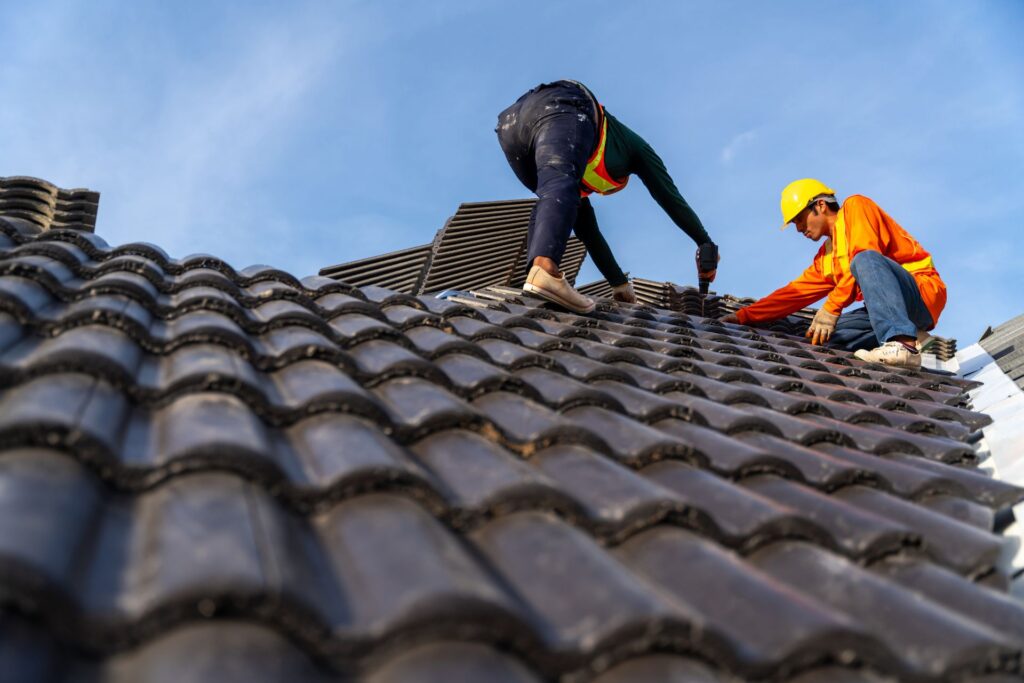Welcome to our comprehensive guide on roof replacement costs in New Zealand. Whether you’re a homeowner facing aging shingles, leaks, or simply planning for the future, understanding the full picture of roof replacement expenses is crucial. In this post, we’ll break down everything you need to know about the various factors that influence costs, including the type of materials, labor, and the size of your roof. We’ll also provide practical tips to help you budget effectively, find reliable contractors, and avoid common mistakes. By the end, you’ll know how to make informed decisions about your roof replacement project, ensuring your home stays safe, dry, and structurally sound for years.
On average, roof replacement costs in New Zealand range from $7,000 to $15,000, depending on factors such as the type of roofing material, the size and complexity of the roof, and labor rates in your area. Materials like asphalt shingles tend to be more affordable, while metal or tile roofs can increase the overall price.
- Why And When You Might Need A Roof Replacement
- Factors That Influence Roof Replacement Costs In NZ
- Average Roof Replacement Costs In NZ By Roof Type
- How To Get Accurate Roof Replacement Quotes In NZ
- Ways To Save On Roof Replacement Costs
- Avoiding Common Roof Replacement Mistakes
- FAQs: About The Roof Replacement Cost NZ
- Conclusion
- Find A Professional Roofing Company Near You!
Why And When You Might Need A Roof Replacement
Common Signs Your Roof Needs Replacing
Your roof is one of the most crucial components of your home, protecting you from the elements. Over time, however, roofs naturally wear out, and knowing when to replace yours can save you from costly repairs. Here are some common signs that it might be time to consider a roof replacement:
- Aging Roof: Every roofing material has a lifespan. For example, asphalt shingles, which are one of the most common roofing materials, typically last around 20 to 25 years. Metal roofs can last anywhere from 40 to 70 years, while tile roofs may endure for over 50 years. If your roof is approaching the end of its expected life, it’s time to start thinking about a replacement before issues arise.
- Leaks, Sagging, or Visible Damage: Water stains on your ceiling, damp spots in your attic, or a sagging roofline are all red flags. Leaks can quickly escalate into significant structural damage if ignored. Visible damage, like cracks or dents, is also a clear sign that your roof is struggling to do its job.
- Missing or Broken Shingles/Tiles: Over time, weather, and wear can cause shingles or tiles to break or go missing altogether. If you notice patches where the roofing material is absent or severely damaged, your roof is vulnerable to the elements, and it’s time to take action.
- Frequent Repairs or Escalating Maintenance Costs: If you find yourself constantly calling in repairs or if your roof requires more and more maintenance to stay functional, investing in a full replacement may be more cost-effective rather than continuously patching things up.
Consequences of Ignoring Roof Damage
Ignoring roof damage can lead to a series of escalating problems that not only compromise your home’s structural integrity but also end up costing you far more in the long run. Here’s what you need to know about the risks of putting off a roof replacement:
- Water Damage: A damaged roof allows water to seep into your home, leading to water damage in walls, ceilings, and insulation. Over time, this can cause rot, weaken the structure of your home, and promote the growth of mold and mildew, which can be harmful to your health.
- Structural Issues: A compromised roof can lead to serious structural issues. Leaks and water infiltration can cause wooden beams to rot and metal fasteners to rust. The longer these problems persist, the more extensive the damage becomes, possibly leading to expensive repairs to the very bones of your home.
- Mold Growth: When water enters your home through a damaged roof, it creates the perfect environment for mold growth. Mold can spread quickly throughout your home, causing health problems for you and your family, especially those with respiratory issues.
- Protecting Your Home’s Value: Your roof is a critical component of your home’s value. A damaged or aging roof can decrease your property’s curb appeal and marketability. By replacing your roof before major issues arise, you protect your investment and avoid the potential for even more significant costs in the future.
- Preventing Costly Future Repairs: Tackling roof replacement before issues worsen can save you money. Waiting too long can lead to damage that extends beyond the roof itself, such as to the walls, foundation, and interior. A timely roof replacement can prevent these cascading costs and keep your home safe and secure.
In conclusion, being proactive about your roof’s condition is essential for maintaining the safety and value of your home. Recognizing the signs of wear and addressing them through roof replacement when needed can prevent a range of problems, from water damage to costly structural repairs. Don’t wait until a small issue becomes a big headache ensure your home remains protected by replacing your roof when the time is right.

Factors That Influence Roof Replacement Costs In NZ
Roof replacement is a significant investment for homeowners in New Zealand, and the total cost can vary based on a range of factors. Understanding these factors helps in planning a roofing project more effectively and avoiding unexpected expenses. Below, we’ll explore the main elements that influence roof replacement costs across the country, from material selection to labor and accessibility.
Roofing Material Types and Their Costs
One of the most critical decisions when replacing a roof is the choice of roofing material. In New Zealand, homeowners have a variety of options, each with its pros, cons, and price points. Here’s an overview of the most popular roofing materials in NZ:
- Asphalt Shingles: A cost-effective and widely-used option, asphalt shingles are favored for their durability and ease of installation. They provide good weather resistance but have a shorter lifespan compared to other materials. The cost typically ranges from $45 to $80 per square meter.
- Metal Roofing: Metal roofing, especially Colorsteel, is a popular choice due to its longevity and ability to withstand harsh weather conditions. It’s lightweight, easy to maintain, and offers great aesthetic flexibility. Prices usually range from $80 to $150 per square meter.
- Concrete Tiles: Known for their durability and aesthetic appeal, concrete tiles offer a long lifespan but can be heavy, requiring a strong roof structure. They provide excellent insulation but can be more labor-intensive to install. Costs typically range between $60 and $120 per square meter.
- Slate Roofing: Slate is a premium roofing material known for its natural beauty and extreme durability, often lasting over a century. However, it’s one of the most expensive options due to the material and installation complexity. Slate roofs can cost upwards of $250 per square meter.
Each material comes with its own unique set of benefits and potential downsides. Your choice should be based on your budget, aesthetic preference, and the specific needs of your home’s location and climate.
Roof Size and Complexity
The size and complexity of your roof are major factors in determining the overall cost of a roof replacement. Larger roofs naturally require more materials and labor, increasing the total cost.
- Roof Size: The total area of the roof is calculated in square meters, and roofers generally charge based on this measurement. The larger the roof, the more materials are required, and labor costs will rise accordingly.
- Roof Complexity: Simple, flat roofs or those with a single slope are easier and quicker to replace, keeping labor costs lower. However, roofs with multiple slopes, valleys, dormers, chimneys, or skylights add complexity, which increases both the labor time and the skill level required, thus raising costs. Complex designs may also require additional materials to ensure proper sealing and waterproofing.
Removal and Disposal of Old Roofing
Before installing a new roof, the old roofing material usually needs to be removed and disposed of, which is an additional expense that many homeowners overlook. The cost of removing the old roof depends on the type of material and the ease of removal. Heavier materials like concrete tiles are more difficult to remove than lighter materials such as asphalt shingles, potentially increasing costs.
- Disposal Fees: After the old roof is removed, there are costs associated with disposing of the debris. In New Zealand, there is also a growing emphasis on recycling old materials where possible, which can help offset some disposal fees but might still incur additional costs depending on the materials.
- Environmental Considerations: New Zealand places a strong focus on environmental responsibility, and some roofing contractors may offer recycling services for materials like metal and concrete. While recycling might slightly increase initial costs, it aligns with sustainable building practices and may provide peace of mind for eco-conscious homeowners.
Labor Costs
Labor costs are another significant component of a roof replacement. In New Zealand, roofing contractors typically charge an hourly rate or a fixed rate per square meter. The average hourly rate for roofing work varies by region but generally falls between $50 and $100 per hour. However, these rates can fluctuate based on the complexity of the job and the experience level of the contractor.
- Importance of Skilled Labor: Hiring qualified and experienced roofing contractors is essential to ensure the roof is installed correctly. Improper installation can lead to future problems such as leaks, structural damage, and increased maintenance costs. Investing in skilled labor upfront can save money on repairs and replacements down the line.
Location and Accessibility
The location of your home and the accessibility of your roof can also influence the cost of roof replacement. Homes located in rural areas or on difficult terrain may face higher transportation costs for both materials and labor.
- Urban vs. Rural: In urban areas, roofing contractors may be more readily available, which can help keep costs competitive. However, in rural or remote areas, fewer contractors may be available, leading to higher costs due to travel expenses and limited competition.
- Roof Accessibility: The height and steepness of your roof also play a role in cost. Multi-story homes or homes with steep roofs may require additional safety measures such as scaffolding, which increases both labor and material costs. Roofs that are difficult to access due to landscaping or other obstacles will also take longer to work on, driving up labor costs.
Extra Features and Upgrades
Roof replacement projects offer an excellent opportunity to add extra features or upgrades that can enhance the functionality and energy efficiency of your home.
- Insulation: Adding insulation during a roof replacement can increase the upfront cost but provides long-term savings by improving energy efficiency. In New Zealand’s varying climate, proper insulation helps keep homes warmer in winter and cooler in summer, reducing heating and cooling costs.
- Skylights: Installing skylights can add natural light to your home, making spaces feel larger and more welcoming. However, the installation of skylights adds complexity to the roofing project and increases costs due to the additional labor and materials required.
- Other Enhancements: Additional upgrades such as roof ventilation systems, guttering, and downpipes can also be integrated during roof replacement. While these enhancements will increase the project’s overall cost, they can improve the roof’s performance and longevity.
In conclusion, the cost of replacing a roof in New Zealand is influenced by several factors, including the type of roofing material, the size and complexity of the roof, labor rates, and any additional features or upgrades you choose to include. By considering these factors carefully, homeowners can plan their roofing projects more effectively, balancing costs with long-term benefits.

Average Roof Replacement Costs In NZ By Roof Type
Roof replacement is a major home improvement project that every homeowner in New Zealand will face at some point. Knowing the average costs of roof replacement can help you plan your budget more effectively and avoid any surprises along the way. In this section, we’ll break down the average roof replacement costs based on different roof types, provide some real-world examples of quotes from New Zealand roofing companies, and offer budgeting tips to help you manage this investment wisely.
Breakdown of Average Costs for Common Roof Types in New Zealand
The cost of roof replacement in New Zealand can vary significantly depending on the type of roof you choose, the size of your roof, and the complexity of the installation. Here’s a breakdown of the average costs for some of the most common roof types in New Zealand:
Asphalt Shingles
Asphalt shingles are one of the more affordable roofing materials and are known for their versatility and ease of installation. In New Zealand, the average cost for asphalt shingle roof replacement ranges from $80 to $120 per square meter. This price includes both materials and labor. For an average-sized roof of about 150 square meters, you might expect to pay between $12,000 and $18,000.
Metal Roofing
Metal roofs are popular in New Zealand due to their durability and resistance to harsh weather conditions. They come in various forms, such as long-run steel, corrugated iron, or pressed metal tiles. The average cost of metal roofing ranges from $90 to $160 per square meter. For a 150-square-meter roof, the total replacement cost can be anywhere from $13,500 to $24,000, depending on the type of metal and the complexity of the job.
Concrete Tiles
Concrete tiles are a long-lasting option with a higher upfront cost but a lifespan of up to 50 years. The average cost of replacing a concrete tile roof in New Zealand typically falls between $150 and $250 per square meter. For an average roof size, homeowners might expect to pay between $22,500 and $37,500.
Clay Tiles
Clay tiles are a premium roofing material and come with a price to match their aesthetic appeal and longevity. In New Zealand, replacing a clay tile roof can cost between $180 and $300 per square meter. This means the total cost for a standard 150-square-meter roof could range from $27,000 to $45,000.
Real-World Example Quotes
To give you a better sense of what to expect, here are a few examples of recent quotes received by homeowners in New Zealand for roof replacement:
- A homeowner in Auckland received a quote of $15,000 for a 120-square-meter metal roof replacement, including the removal of the old roof and installation of a new long-run steel roof.
- Another homeowner in Christchurch was quoted $30,000 to replace a 200-square-meter concrete tile roof, which included roof scaffolding, materials, and labor.
- In Wellington, a home with a 160 square meter asphalt shingle roof received a quote of $20,000, which covered the cost of both the shingles and a full roof inspection before installation.
It’s important to note that these quotes can vary based on factors such as roof pitch, access to the site, and the overall complexity of the installation.
Budgeting Tips for Roof Replacement
Replacing your roof can be a significant financial commitment, so careful budgeting is essential. Here are some tips to help you prepare for the expense:
Start Saving Early
Roof replacement is not something that happens overnight. As roofs typically last between 20 to 50 years, it’s a good idea to start setting aside money for this inevitable expense early on. This will help you avoid financial strain when the time comes to replace your roof.
Get Multiple Quotes
One of the best ways to ensure you’re getting a fair price is by obtaining multiple quotes from reputable roofing contractors. This not only helps you compare costs but also gives you a better understanding of what’s included in the price (e.g., removal of old roofing materials, installation of new materials, potential structural repairs). Aim for at least three quotes from different companies to get a solid comparison.
Consider Financing Options
If saving up for a roof replacement isn’t feasible, you might want to explore financing options. Many roofing companies in New Zealand offer payment plans or can refer you to third-party financing providers. Additionally, some homeowners opt for personal loans or home improvement loans to cover the costs.
Prepare for Unexpected Costs
No matter how carefully you plan, there’s always the possibility of unexpected costs arising during your roof replacement project. These could include discovering rotting timber or hidden structural issues that need to be addressed before the new roof can be installed. To avoid stress, it’s a good idea to set aside an extra 10-20% of your budget for potential cost overruns.
Look for Cost-Saving Opportunities
While roof replacement is a significant investment, there are some ways to save on costs. For example, scheduling your roof replacement during the off-season or combining it with other home improvement projects could potentially lower labor costs. Additionally, choosing a more budget-friendly roofing material, like asphalt shingles, could help keep your expenses in check without sacrificing quality.
Replacing a roof in New Zealand is a significant but necessary expense for homeowners. By understanding the average costs for different roof types and taking the time to budget carefully, you can ensure that your roof replacement project is a success. With proper planning and smart financial decisions, you’ll be able to enjoy a sturdy, long-lasting roof that protects your home for decades to come.

How To Get Accurate Roof Replacement Quotes In NZ
When you’re considering a roof replacement in New Zealand, getting accurate quotes is essential to ensure you’re receiving quality work at a fair price. This guide will help you navigate the process, offering insights on selecting the right roofing contractor, what to expect in a roofing quote, and tips for negotiating the best price without compromising on quality.
Choosing the Right Roofing Contractor
One of the most crucial steps in getting an accurate roof replacement quote is choosing the right contractor. In New Zealand, there are many roofing companies, but not all of them deliver the same level of expertise and service. Here are some tips for finding a reputable roofing contractor:
1. Check Their Credentials: It’s important to verify that the contractor is properly licensed and insured. A legitimate roofing contractor in NZ should hold the necessary licenses to operate and should have insurance to cover any potential damages or injuries during the project. This protects both you and the contractor.
2. Read Reviews and Testimonials: Look for online reviews or ask for testimonials from past clients. Google Reviews, Facebook, or even specialized home service review sites can give you a sense of the contractor’s reputation. Be wary of contractors with little to no online presence or overwhelmingly negative reviews.
3. Inspect Previous Work: Ask the contractor for examples of their previous roofing projects. Reputable contractors will gladly provide references and show you photos or even site visits of their past work. This will give you a clearer picture of the quality of their craftsmanship and their range of experience.
4. Local Knowledge: Contractors with extensive experience working in your region are often more reliable. They understand local weather conditions, building codes, and common roofing issues specific to NZ’s climate, which means they can recommend the best materials and techniques for your roof.
By carefully vetting contractors, you’ll ensure that the quotes you receive are from professionals who are capable of completing the job to a high standard.
What to Look for in a Roofing Quote
Once you’ve identified a few potential contractors, the next step is to analyze their quotes. A detailed roofing quote should include several key components that give you a clear understanding of the costs and scope of the project. Here’s what to look for:
1. Materials Breakdown: The quote should specify the type of roofing materials being used, including the brand and grade of shingles, tiles, or metal roofing. The materials’ quality can significantly impact both the price and longevity of your roof.
2. Labor Costs: Ensure that the quote breaks down labor costs separately from materials. This helps you understand how much you’re paying for the workmanship itself. The labor costs should reflect the complexity of the project and the experience level of the team.
3. Timeline for Completion: A good roofing quote will provide a projected timeline for when the work will start and finish. Delays in roofing projects can lead to additional costs and inconvenience, so having a clear schedule is crucial.
4. Warranty Information: Always check what warranties are included in the quote. This could be a warranty on the materials themselves or a guarantee on the contractor’s workmanship. A solid warranty shows the contractor stands behind their work.
5. Detailed Scope of Work: The quote should outline all the work involved, including any additional tasks such as removing old roofing, repairs to the underlying structure, or installation of insulation. Vague descriptions should be a red flag.
6. Red Flags to Watch For: Be cautious of quotes that are unusually low compared to others. This could indicate that the contractor is cutting corners on materials or labor. Additionally, watch out for vague terms, hidden fees, or unclear descriptions of the work to be done. Transparency is key in ensuring you get what you’re paying for.
By examining these elements in a quote, you can compare your options more effectively and avoid unexpected costs down the line.
Negotiating the Best Price
Negotiating the price of your roof replacement is possible, but it’s important to approach this step carefully to ensure you don’t sacrifice quality for savings. Here’s how you can negotiate effectively:
1. Compare Multiple Quotes: Get at least three quotes from different contractors. This gives you a solid foundation to understand the market rate for your roof replacement and allows you to identify which quotes offer the best value. Contractors are often willing to negotiate if they know you’re considering multiple offers.
2. Focus on Value, Not Just Price: While it’s tempting to go for the lowest price, remember that your roof is a long-term investment. Look for contractors who offer the best value, which includes the quality of materials, workmanship, and warranties. You may be able to negotiate better terms or upgrades rather than simply lowering the price.
3. Be Open About Your Budget: If the quotes you’re receiving are higher than expected, communicate your budget constraints with the contractor. Many are willing to work within your financial limitations by suggesting alternative materials or slightly adjusting the scope of work without compromising the overall quality.
4. Ask for Package Deals: Some contractors may offer discounts if you’re willing to bundle services, such as roof repairs, gutter installation, or additional maintenance work. This can be a cost-effective way to improve more than one area of your home while still getting a fair deal.
5. Timing Matters: If possible, try scheduling your roof replacement during the contractor’s off-season, such as late autumn or early spring. During these periods, contractors may be more flexible with pricing since demand is lower.
Negotiating the best price is a balance between understanding the value you’re getting and ensuring that the contractor is fairly compensated for their work. Don’t be afraid to ask questions or request adjustments to the quote just make sure you’re not cutting costs in areas that could affect the durability and safety of your new roof.
By following these steps, you’ll be in a better position to get accurate and competitive roof replacement quotes in NZ. Carefully selecting your contractor, scrutinizing the details of their quote, and negotiating with confidence will help ensure your roofing project is completed on time, within budget, and to the highest standards.

Ways To Save On Roof Replacement Costs
When it comes to roof replacement, the costs can quickly add up. However, with careful planning, smart decisions, and some flexibility, you can manage expenses and even find opportunities for savings. In this guide, we will explore practical strategies to help you save on your roof replacement costs without compromising the quality of the job. Let’s dive into how timing, DIY efforts, and leveraging warranties or rebates can make a big difference in your budget.
Timing Your Roof Replacement
One of the most overlooked yet effective ways to save on roof replacement costs is by strategically timing the work. Like many home improvement projects, roofing work follows a seasonal pattern. Peak roofing season typically occurs during late spring through early fall, when the weather is most favorable for outdoor work. During this time, demand is high, which means contractors are busier, and prices may be at their peak.
To potentially save money, consider scheduling your roof replacement during the off-peak seasons late fall, winter, or early spring. While there are fewer sunny days, many roofing companies offer discounts to keep their crews busy during slower months. Additionally, with fewer projects on their plate, contractors may offer more competitive pricing or be more flexible with scheduling. However, it’s important to balance the risk of unpredictable weather with potential savings. Work closely with your contractor to determine the best time to replace your roof, ensuring the project is completed efficiently and safely, even during the off-season.
DIY Roof Replacement: When Is It Feasible
In today’s DIY-centric culture, many homeowners consider taking on part or all of their roof replacement to save on labor costs. While this can result in significant savings, it’s important to weigh the pros and cons carefully.
Pros
- Cost Savings: Labor accounts for a large portion of roofing costs. By handling some or all of the work yourself, you can dramatically cut down on expenses.
- Control Over Materials: When you DIY, you have more control over the materials, and you can shop around for the best deals.
Cons
- Safety Concerns: Roofing is dangerous work, especially on steep or complex roofs. Without proper safety equipment and experience, the risk of falls or injury is high.
- Skill Level: Roofing is a specialized trade, and without experience, you may struggle with installation techniques that can compromise the roof’s performance and longevity.
- Warranty Voids: Some roofing material manufacturers may void their warranties if the installation is not performed by certified professionals.
So, when should you hire professionals? If your roof is complex, steep, or high, it’s best to leave the job to the pros. Similarly, if you’re unsure of your ability to follow safety protocols or if you’re looking for a long-lasting warranty, a professional roofing contractor is the safer and more reliable option. In many cases, tackling small aspects of the project like removing the old shingles yourself can still save money without taking on the risks of the entire project.
Taking Advantage of Warranties and Rebates
An often overlooked aspect of saving on roof replacement costs is the potential benefits offered by warranties and rebates. These can help offset initial expenses and provide long-term value.
- Warranties: Many roofing materials, especially those from reputable manufacturers, come with warranties that can last anywhere from 10 to 50 years. These warranties protect against defects in the materials, ensuring that you won’t be stuck with the cost of replacing a faulty roof just a few years after installation. Additionally, some contractors offer workmanship warranties, which cover the labor involved in the installation. When choosing a contractor, it’s worth asking about both types of warranties. Paying a bit more upfront for materials or labor may save you significant repair or replacement costs down the line.
- Rebates and Incentives: To encourage homeowners to adopt energy-efficient materials, governments, and utilities often offer rebates or incentives for certain types of roofing, such as cool roofs, solar shingles, or energy-efficient metal roofs. These incentives can vary by location and change frequently, so be sure to check with local government agencies and your utility provider to see what options are available. Additionally, many roofing manufacturers offer rebates on specific products, which can help reduce your upfront costs.
By doing your homework on warranties and rebates, you can capitalize on these opportunities, potentially saving thousands over the life of your roof.
In conclusion, saving on roof replacement costs doesn’t mean cutting corners it’s about making smart choices. Timing your project during off-peak seasons, carefully considering what aspects (if any) you can tackle yourself, and taking advantage of warranties and rebates can significantly reduce your overall expenses. By being proactive and informed, you’ll not only save money but also ensure that your new roof lasts for decades to come.

Avoiding Common Roof Replacement Mistakes
When it comes to replacing your roof, there are several common mistakes that homeowners can easily make. These missteps often lead to costly repairs, reduced roof lifespan, and unnecessary stress. To ensure that your roof replacement goes smoothly and provides long-lasting results, it’s crucial to avoid the following pitfalls.
Choosing the Wrong Material
One of the biggest mistakes homeowners make during a roof replacement is selecting the wrong material. Many are drawn to materials based solely on appearance or cost without considering the suitability of the material for their specific climate and budget.
For instance, asphalt shingles may be the most popular choice due to their affordability and versatility, but they may not be the best option in areas prone to high winds or extreme temperatures. Similarly, metal roofs, though more expensive upfront, offer exceptional durability and energy efficiency in certain climates but may not fit every budget.
To avoid making a poor choice, start by assessing your local climate conditions. Is your area subject to heavy rainfall, snow, or scorching heat? Then, research which roofing materials perform best under these conditions. Additionally, factor in your budget, keeping in mind that while some materials may have a higher initial cost, they could save you money over time by reducing energy bills or lasting longer without repairs. Consulting a roofing expert can help guide you toward the right material for your specific needs.
Not Properly Vetting Contractors
Another critical mistake that can turn a roof replacement project into a nightmare is not thoroughly vetting contractors before hiring them. While it may be tempting to choose the cheapest option, hiring an unqualified or uninsured contractor can lead to poor workmanship, safety issues, and even legal problems.
Unlicensed contractors may not follow proper installation protocols, leading to roof leaks or structural problems that could cost you far more than the initial savings. In addition, if the contractor is uninsured, you could be held liable for any accidents or damage that occurs during the project.
To avoid these risks, always take the time to check a contractor’s qualifications. Ask for proof of licensing, insurance, and certifications that demonstrate their expertise. Read online reviews and request references from past clients to get a sense of their reliability and work quality. While this process may take a bit more time, it can save you a lot of headaches and money in the long run.
Ignoring Maintenance After Replacement
Once your new roof is installed, many homeowners make the mistake of thinking the job is done and no further attention is needed. However, neglecting roof maintenance can significantly reduce the lifespan of your new roof and lead to costly repairs down the road.
Regular maintenance is key to ensuring your roof stays in top condition for years to come. Simple tasks like clearing debris, inspecting for damaged shingles, and ensuring proper drainage can prevent minor issues from turning into major problems. For example, clogged gutters can cause water to back up under your shingles, leading to leaks and water damage.
Homeowners can do some of this maintenance themselves. Cleaning gutters, removing leaves, and checking for any visible damage or wear are all manageable tasks. However, scheduling periodic professional inspections is also important, especially after severe weather events. A professional roofer can spot issues that may not be visible to the untrained eye and address them before they cause significant damage.
In conclusion, avoiding common roof replacement mistakes involves choosing the right material for your climate and budget, thoroughly vetting contractors, and committing to regular roof maintenance. Taking these steps ensures your roof will not only look good but also perform well for many years to come. By being proactive, you can save yourself from costly repairs and enjoy the peace of mind that comes with a well-maintained home.

FAQs: About The Roof Replacement Cost NZ
Conclusion
Understanding the full cost of roof replacement in New Zealand is crucial for homeowners to make informed decisions. By planning and budgeting early, you can avoid unexpected expenses and ensure the project runs smoothly. It’s essential to take your time when selecting the right contractor and materials that best suit your home’s unique needs. Careful consideration upfront can save you time and money down the road. If you’re ready to take the next step, don’t hesitate to reach out for a personalized roofing quote or to learn more about the available roof replacement options in your area.
Find A Professional Roofing Company Near You!
- Auckland Roofing Company
- Cambridge Roofing NZ
- Central Otago Roofing Services
- Hamilton Roofing Services
- Hastings Roofing Company
- Hawkes Bay Roofing Company
- Kapiti Coast Roofing Services
- Lower Hutt Roofing Services
- Napier Roofing Company
- New Plymouth Roofing Company Taranaki
- North Shore Roofing Company
- Orewa Roofing Company
- Porirua Roofing Services
- Roof Painting Company Auckland
- Roof Repairs Manukau
- Roof Repairs Takanini
- Roofers Papakura
- Roofing Company Invercargill
- Roofing Contractors Northland
- Roofing Contractors South Auckland
- Roofing Contractors Whangarei
- Roofing Palmerston North
- Roofing Waikato
- Roofing Walkworth
- Roofing Wellington
- Te Awamutu Roofing
- Upper Hutt Roofing Services
- Warkworth Roofing Company
About the Author:
Mike Veail is a recognized digital marketing expert with over 6 years of experience in helping tradespeople and small businesses thrive online. A former quantity surveyor, Mike combines deep industry knowledge with hands-on expertise in SEO and Google Ads. His marketing strategies are tailored to the specific needs of the trades sector, helping businesses increase visibility and generate more leads through proven, ethical methods.
Mike has successfully partnered with numerous companies, establishing a track record of delivering measurable results. His work has been featured across various platforms that showcase his expertise in lead generation and online marketing for the trades sector.
Learn more about Mike's experience and services at https://theleadguy.online or follow him on social media:




